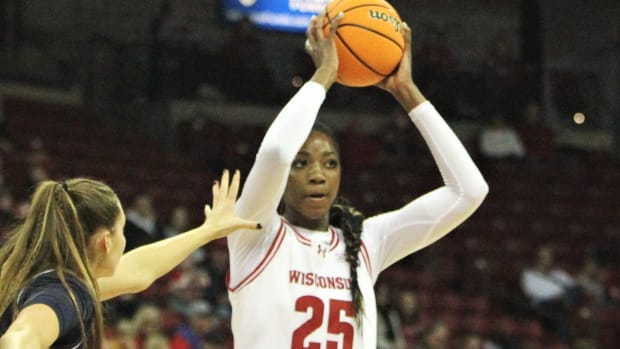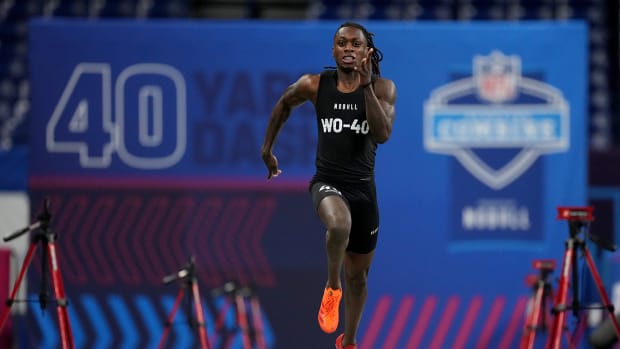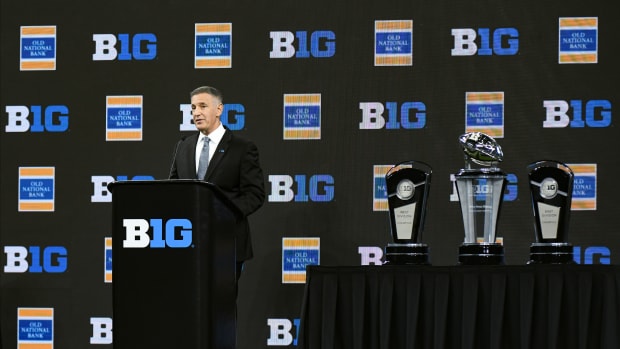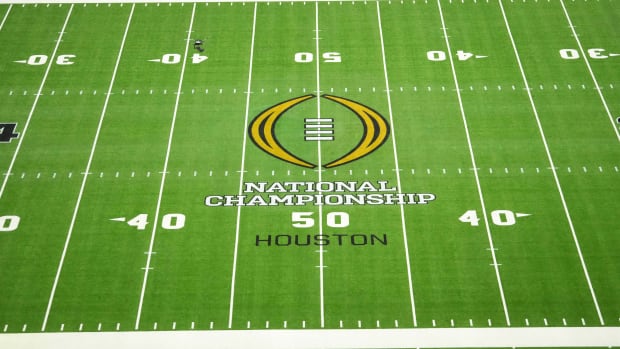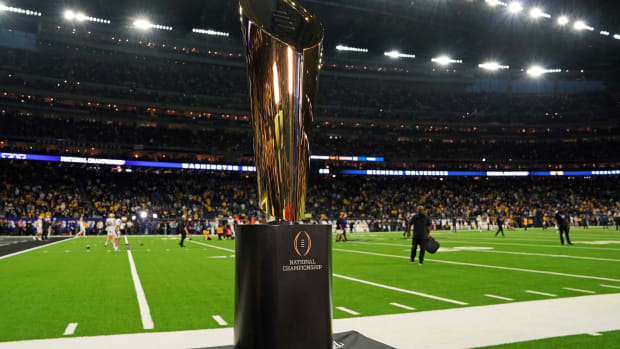Purdue Players Will Return to Completely Different Campus in a Few Weeks
WEST LAFAYETTE, Ind. — Everything that has become routine about college football is being flipped on its ear by the COVID-19 pandemic, and when players start returning to the Purdue campus on or around June 1, it's going to look nothing like the place they left in mid-March.
In order to keep everyone safe, from the starting quarterback and the head coach to the cleaning crew and everyone in between, major changes are going to be put in place before the first lineman hoists his first set of weights.
Purdue's football and basketball players can return soon, but this much is true:
They won't recognize the place. And their old schedules and routines? They are flying right out the window.
Sports Illustrated interviewed coaches, trainers and administrators at several schools around the country this week, and several of the changes that are going to need to be put in place are drastic and never been seen before in a college football program. (Purdue officials declined to comment for this article, but said an announcement on their planned procedures would be coming soon.)
Here are the most noticeable changes at many schools:
- No access to showers: Players will be asked to shower at home to better keep a distance from each other.
- No sharing towels or water bottles: Everyone will have their own bottles and towels, and they will get switched out as often as needed.
- Temperature checks at the front door every time you enter: Being proactive in stopping the virus' spread is critical, so players will be checked often and anyone who isn't feeling well will be kept away from the facility, no matter what.
- Coaches and staff members in masks and gloves: Everywhere you turn, coaches and staff members — from head coach Jeff Brohm all the way to the student managers and school employees — will be wearing protective gear.
- Weight rooms redesigned to add space between machines: Machines will be moved, and some taken out entirely to keep everyone socially distanct. Some southern schools are actually moving some machines outside to better comply.
- Face shields or masks while weight training: With all the grunting and sweating that goes on in a weight room, players may be asked to wear shields simply to stop the spread of the virus from their breathing or sweating.
- Constant cleaning and sanitizing: Some schools, like the University of Houston, have bought fogger machines to use in locker rooms and weight rooms that spray a disinfectant that can stop a virus.
And what may be the most difficult thing of all is keeping players socially distance, all the time. That's going to be hard, because many of these players are best of friends and they haven't seen each other in months.
No hugs, no high-fives, no 'great to see you'' embraces. No hanging out together in groups, inside the weight room or out. And no contact on the football field either, of course.
That may be the most difficult task, says Mary McLendon, an associate athletic director at Mississippi State and a former athletic trainer who is overseeing the Bulldogs' reopening plans.
The point is to move them through as quickly as possible: enter, work out and leave. "That will be a change for them," she says. "They're so used to this being their hub and they spend so much time here."
No one is particularly thrilled about it, but the goal for every athletic department is to simply make it all work the best they can, with the health and safety of EVERYONE being the first priority.
"It will be the new norm," says Tory Lindley, president of the National Athletic Trainers' Association and an associate athletic director at Northwestern. "It will be the best we can do. We're all hoping to put forward the safest environment for our student-athletes."
The biggest focus, of course, is on whether games get played or not in the fall. That's still to be determined, and it's going to be different in various parts of the country. According to Gov. Eric Holcomb's plans, he wants Indiana all back to normal by July 4.
But what's normal going to be? Things change literally every day when it comes to dealing with this virus.
"I told people I thought shutting down everything was hard. This opening up is... 'Oh my God!'" says Greg Stewart, the longtime Tulane team physician who has recently been charged with leading the American Athletic Conference's reopening plan. "Everyone wants an answer, but there are research articles coming out every day with new information about the virus. We can't figure out how to open the economy and we've got to figure out how we're going to bring athletes back who, especially in football, are running into each other."
Keeping groups small will be important, too. That's why not all sports were allowed to return on June 1. This is has to be done in small steps.
"You don’t flip a switch and everybody's back to normal," Florida athletic director Scott Stricklin said. "You can't invite 500 (athletes) back at one time. You have to have small groups."
READ THE COMPLETE SPORTS ILLUSTRATED STORY HERE
Getting players back on to West Lafayette is the first step in seeing what might happen with the college sports calendar during the 2020-21 school year. The hope and goal for most institutions, due to the massive revenue involved, is to get the football season started on time in September.
It's one of many big decisions that need to be made by early July or so, and players returning now is something of a litmus test to see how it might go. School presidents also want to have students on campus for the fall semester, and they'll be watching this return closely as well.
Some schools, like Notre Dame, South Carolina and others, already have announced plans to start the semester early, eliminate a fall break and get students back home by Thanksgiving and not have them return until the second semester starts in January.
Purdue has not announced its plan for student attendance in the fall as of yet, but school president Mitch Daniels said last week that it's his goal to have students on campus in the fall with all proper protocols in place to keep everyone safe. .
It will be interesting to see what happens with the college basketball schedule of a lot of schools choose not to have students on campus for seven weeks or so. That, too, is still to be determined as well.
